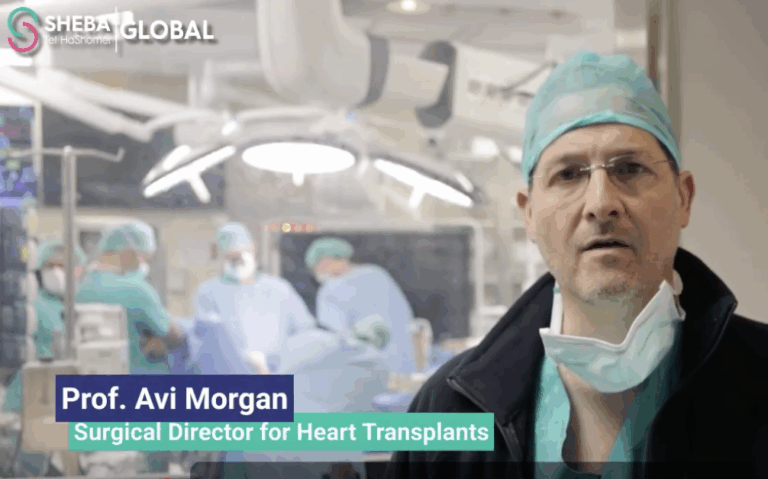L'Université de Tel Aviv vers de nouveaux traitements de l'obésité. La courbe des français en surpoids (43 %) est en hausse, révèle l'ICCR

[:fr]Pour comprendre comment se développe l’obésité, une équipe de chercheurs de l’Université de Tel Aviv composée du Pr Amit Gefen, du Dr. Natan Shaked, de la doctorante Naama Shoham et du Pr Dafna Benayahu a utilisé les technologies les plus en pointe pour analyser l’accumulation de graisse dans le corps au niveau cellulaire. Leurs résultats montrent que la nutrition n’est pas le facteur le plus important dans l’obésité.
Les chercheurs, qui ont montré les mécanismes de production de graisse au niveau cellulaire, sont en train de créer une plate-forme pour développer de nouvelles thérapies et technologies pour prévenir ou même inverser le gain de poids.

Dans des cultures en laboratoire, les chercheurs ont découvert que, une fois que les gouttelettes lipidiques sont accumulées dans la cellule, la structure de la cellule et son mécanisme changent radicalement. En utilisant un microscope à force atomique de dernière génération et d’autres technologies de microscopie, ils ont pu observer la transformation de la composition de la cellule de graisse, qui est devenue plus rigide en s’allongeant. Cette raideur modifie les cellules environnantes en les déformant, les poussant à changer leur forme et leur composition.
L’ICCR (International chair on cardiometabolic risk), qui vient de lancer une campagne contre le risque cardiovasculaire lié à l’obésité, l’Alliance France pour le mieux vivre, a annoncé en avant-première les chiffres de l’obésité d’une étude de l’OCDE a paraitre en mai 2014 : « on constate des signes de ralentissement de l’épidémie d’obésité notamment en Angleterre, en Espagne et aux États-Unis. En France, les taux d’obésité et de surpoids sont relativement bas par rapport aux autres pays de l’OCDE, 43 % des adultes étant en surpoids contre 53% en moyenne dans l’OCDE. Cependant, la France a connu une augmentation graduelle des taux d’obésité et de surpoids au cours des dernières décennies, sans aucun signe de ralentissement contrairement à d’autres pays », révèle Franco SASSI, Economiste de Santé, Membre de l’OCDE et membre de l’Alliance France pour le Mieux-Vivre.
Voir communiqué complet sur israelscienceinfo.com en version anglaise.
Ces travaux ont été publiés dans le Biophysical Journal
Voir dossier complet dans Israël Science Info version papier.[:en]Over 35 percent of American adults and 17 percent of American children are considered obese, according to the latest survey conducted by the Centers for Disease Control and Prevention. Associated with diabetes, heart disease, stroke, and even certain types of cancer, obesity places a major burden on the health care system and economy. It’s usually treated through a combination of diet, nutrition, exercise, and other techniques.
To understand how obesity develops, Prof. Amit Gefen, Dr. Natan Shaked and Ms. Naama Shoham of Tel Aviv University’s Department of Biomedical Engineering, together with Prof. Dafna Benayahu of TAU’s Department of Cell and Developmental Biology, used state-of-the-art technology to analyze the accumulation of fat in the body at the cellular level. According to their findings, nutrition is not the only factor driving obesity. The mechanics of « cellular expansion » plays a primary role in fat production, they discovered.
By exposing the mechanics of fat production at a cellular level, the researchers offer insight into the development of obesity. And with a better understanding of the process, the team is now creating a platform to develop new therapies and technologies to prevent or even reverse fat gain. The research was published this week in the Biophysical Journal.
Getting to the bottom of obesity
« Two years ago, Dafna and I were awarded a grant from the Israel Science Foundation to investigate how mechanical forces increase the fat content within fat cells. We wanted to find out why a sedentary lifestyle results in obesity, other than making time to eat more hamburgers, » said Prof. Gefen. « We found that fat cells exposed to sustained, chronic pressure — such as what happens to the buttocks when you’re sitting down — experienced accelerated growth of lipid droplets, which are molecules that carry fats.

« Contrary to muscle and bone tissue, which get mechanically weaker with disuse, fat depots in fat cells expanded when they experienced sustained loading by as much as 50%. This was a substantial discovery. »
The researchers discovered that, once it accumulated lipid droplets, the structure of a cell and its mechanics changed dramatically. Using a cutting-edge atomic force microscope and other microscopy technologies, they were able to observe the material composition of the transforming fat cell, which became stiffer as it expanded. This stiffness alters the environment of surrounding cells by physically deforming them, pushing them to change their own shape and composition.
« When they gain mass and change their composition, expanding cells deform neighboring cells, forcing them to differentiate and expand, » said Prof. Gefen. « This proves that you’re not just what you eat. You’re also what you feel — and what you’re feeling is the pressure of increased weight and the sustained loading in the tissues of the buttocks of the couch potato. »
The more you know …
« If we understand the etiology of getting fatter, of how cells in fat tissues synthesize nutritional components under a given mechanical loading environment, then we can think about different practical solutions to obesity, » Prof. Gefen says. « If you can learn to control the mechanical environment of cells, you can then determine how to modulate the fat cells to produce less fat. »
The team hopes that its observations can serve as a point of departure for further research into the changing cellular environment and different stimulations that lead to increased fat production.
American Friends of Tel Aviv University (www.aftau.org) supports Israel’s leading, most comprehensive and most sought-after center of higher learning, Tel Aviv University (TAU). Rooted in a pan-disciplinary approach to education, TAU is internationally recognized for the scope and groundbreaking nature of its research and scholarship — attracting world-class faculty and consistently producing cutting-edge work with profound implications for the future. TAU is independently ranked 116th among the world’s top universities and #1 in Israel. It joins a handful of elite international universities that rank among the best producers of successful startups.
Publication Biophysical Journal[:]






